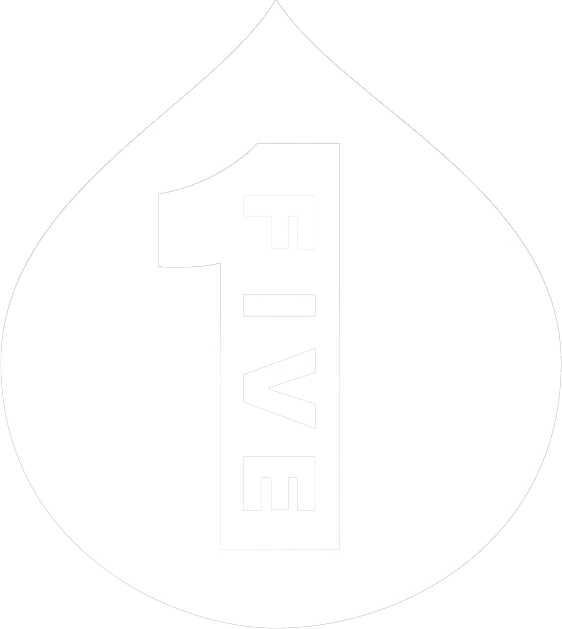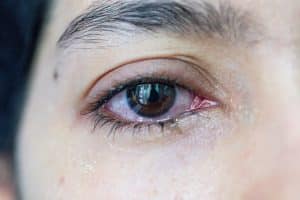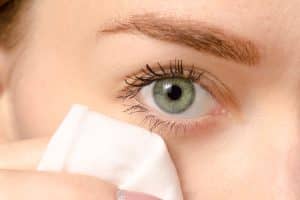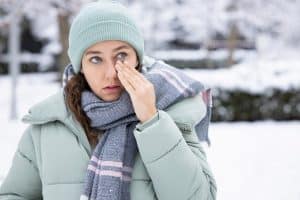Have you ever found yourself struggling to concentrate on what you’re doing because of discomfort in your eyes? Do you get headaches if you spend too much time looking at the same thing? Do you frequently experience dry eyes? All these can be signs that you have a condition called eye strain.[1] But what exactly is eye strain, and what can be done about it?
What are strained eyes?
Eye strain is a term used to describe a variety of side effects that stem from a singular cause – that you have, in one way or another, put your eyes under too much strain. While there are several different forms of irritation associated with eye strain, it’s uncommon to get all of them at once. It’s much more likely that you’ll experience one or two side effects at a time, and this may be dependent on how your eye strain came about.
Here are the most common signs of eye strain:
- Double vision
- Headaches
- Light sensitivity
- Red or bloodshot eyes
- Blurry vision
- Watery eyes
- Difficulty focusing
- Sore, burning, tired or itchy eyes
- Twitching eyelids
- Dry eyes
Unfortunately, many of the signs of eye strain are also side effects of other things, such as dehydration, or are conditions in their own right, such as dry eyes. However, in most cases the best treatment for eye strain is to avoid whatever is straining your eyes, which can often be helpful even if eye strain isn’t the exact problem. So, what causes should you be looking out for?[1]
What causes eye strain?
As the name suggests, eye strain happens when you make your eyes work harder than they should. This can occur in a number of ways, but it’s commonly associated with prolonged use of screens and digital devices such as phones, computers and tablets. It’s thought that the bright blue light emitted by these devices strains our eyes, which causes irritating effects such as those laid out above.
One of the best ways to avoid eye strain, therefore, is to cut back on your screen time. However, this isn’t always feasible, particularly for those who need to use screens for work or studying. If this is the case for you, you might prefer to use a treatment specially designed for treating tired screen eyes, such as TheraTears® Screen Eyes Eye Drops. These drops contain hyaluronic acid and euphrasia to help refresh and rejuvenate strained eyes to restore hydration and comfort.
It’s important to note, though, that screen usage isn’t the only thing that can cause eye strain. Just as prolonged use of digital devices can cause discomfort, so can extended use of analogue items – books, magazines and newspapers, for example. This is particularly true if something is making it difficult for you to see, whether you need to get a new prescription for your reading glasses or your surroundings aren’t lit well enough for you to see easily.
Activities which require you to be alert and focusing with your eyes all the time can also cause eye strain – for example, driving, sewing or doing a small-scale, fiddly DIY project. On top of that, eye strain is also commonly caused by exposure to bright lights, whether artificial or natural. This means it can be more common in summer when the sun is at its strongest.
Finally, it’s worth noting that your eyes’ resilience is impacted by your overall wellbeing. If you are stressed or tired, that can make you more susceptible to eye strain even if you’re not doing anything out of the ordinary.[1]
How long does eye strain last?
Eye strain can last for as long as you engage in the activity causing it, as well as continuing for a period of time afterwards. How long it lasts can depend on a variety of factors, such as:
- How long the activity lasted – browsing the internet all day long will likely cause longer-lasting eye strain than reading for an hour or two before bed
- Your wellbeing outside of eye strain – stress, dehydration and fatigue can exacerbate this condition
- How many contributing factors there were – for example, using a digital device while in a poorly lit area can have a greater effect than simply being in a dark room
Eye strain can be uncomfortable and annoying, but by making small adjustments to your behaviour or using handy eye drop treatments, you can manage the condition so it has less of an effect on your day-to-day life.[1]
Resources:
[1] https://www.aao.org/eye-health/diseases/what-is-eye-strain







